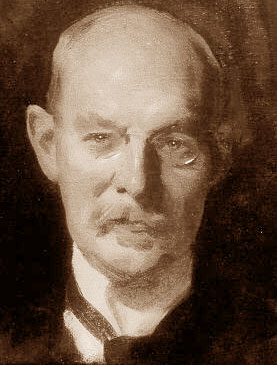Playing ball was considered a pleasant pastime in ancient Greece and the Roman Empire, a tradition that continued into the Middle Ages.
During that period, a game similar to modern volleyball quickly spread. It survived for centuries and was later renamed Faustball (literally, “fistball ") in 19th-century Germany.
 William G Morgan
William G Morgan
On February 9, 1895, William Morgan, a physical education teacher from Massachusetts, invented a new sport, which he renamed minonette: this was the forerunner of modern volleyball. It can therefore be said that volleyball was born in the USA at the end of the 19th century, but at the time it was still a slightly different sport than the one played today.
William Morgan's goal at the time was to invent a game that would become as popular as basketball. The practical demonstration of how to play minonette (a term that derives from the French "minon", literally "cat", an ancient ball game popular among the French nobility) took place in a college in Springfield on February 9, 1895.
The event was not only an opportunity to present a new game but also to shine a spotlight on a revolutionary aspect related to the way of playing.
Compared to the most popular sports of the time, in fact, minonette did not rely on physical strength to prevail over opponents, but on other skills, such as agility, speed of movement, quick reflexes and the ability to concentrate.
Minonette had simple rules: the ball had to be touched with the hands, for an unlimited number of times, and the match was played in sets.
 Alfred H Halstead
Alfred H Halstead
In the evolution of the history of volleyball, an important contribution was made by Alfred H. Halstead, another American physical education teacher, who changed the name of minonette to volleyball on March 10, 1896. It was also thanks to Halstead's tireless work that volleyball spread widely in the USA and, from there, to the rest of the world.
From the United States, where it did not have an easy start at the beginning, volleyball began to be played with passion in South America, particularly in Brazil, Argentina and Uruguay. From here it began to spread towards Asia: in 1898 volleyball arrived in Manila, in the Philippines, which was the scene of the first spikes, and from there it continued its unstoppable run towards China (in 1906, brought by YMCA teachers Max Exner and Howard Crockner) and Japan (1908), where it achieved incredible success.
At the beginning, the way of playing depending on the place differed in some aspects: the ways of playing were different (Western and Eastern).
In 1912, the rule that provides for the clockwise rotation of the athletes was introduced.
Volleyball arrived in Europe during the First World War, imported by American troops. Dr. George J. Fisher, secretary of the YMCA War work, included it in the recreational programs of the US Army, to which Spalding & Brothers made available 16,000 balls. England was the first European country to adopt volleyball (1914).
Volleyball also arrived in Italy with the American army. In Porto Corsini, the port of Ravenna, in 1917-18 the US soldiers of the local seaplane base regularly practiced this sport.
1916 George J. Fisher publishes the new rules of the game in Spalding's Athletic Library, issue 364, cost 10 cents:
- the playing field measures 10.50 x 18 m
- the net is placed at a height of 2.44 m from the ground
- the teams are made up of 6 players with the possibility of substitutions
- the term "service order" is introduced; following the "rotation"
- each set is played to the limit of 15 points
- the matches are played as the best of 2 sets out of 3
- initial draw for the choice of service or court
- the first service in the sets following the first, is performed by the team that lost the previous set
- the only referee also acts as scorekeeper
- two line judges, in addition to signaling the ball out or in, control the rotation order
In 1922, the rule of three maximum touches allowed for each team to return the ball to the opposite field was introduced. The first YMCA championship of the USA and Canada was organized, as a technical demonstration for the subsequent Olympic Games in 1924.
Then the discipline began to standardize, especially after 1938 – the date in which the “block” technique was imposed: from that moment on, the discipline quickly standardized.
The Italian Volleyball Federation (FIPAV) was born in 1946 when volleyball began to spread especially among the youngest.
In 1947, representatives of 15 federations met in Paris and created the Fédération Internationale de Volleyball (FIVB).
Volleyball still has a large following today, especially in the Far East (Japan, China, South Korea), in Eastern and Southern European countries, and in Brazil.
These countries can also boast the best international results both at the club and national team level. Countries such as Brazil, Italy, the United States of America, Russia, Serbia and Cuba have their national teams at the top of the rankings for both men and women; other countries can only boast one national team (male or female) at the top of the rankings (Japan and China for women, Argentina for men).
Many other countries remain on the sidelines and, except for rare cases, it is always the same countries that compete for the laurels of the most important tournaments.
Over time, several changes to the regulations have occurred (from the integral rally point system starting in 2000 to the libero starting in 1997, from disciplinary measures to field lines) up to the current international regulation.










